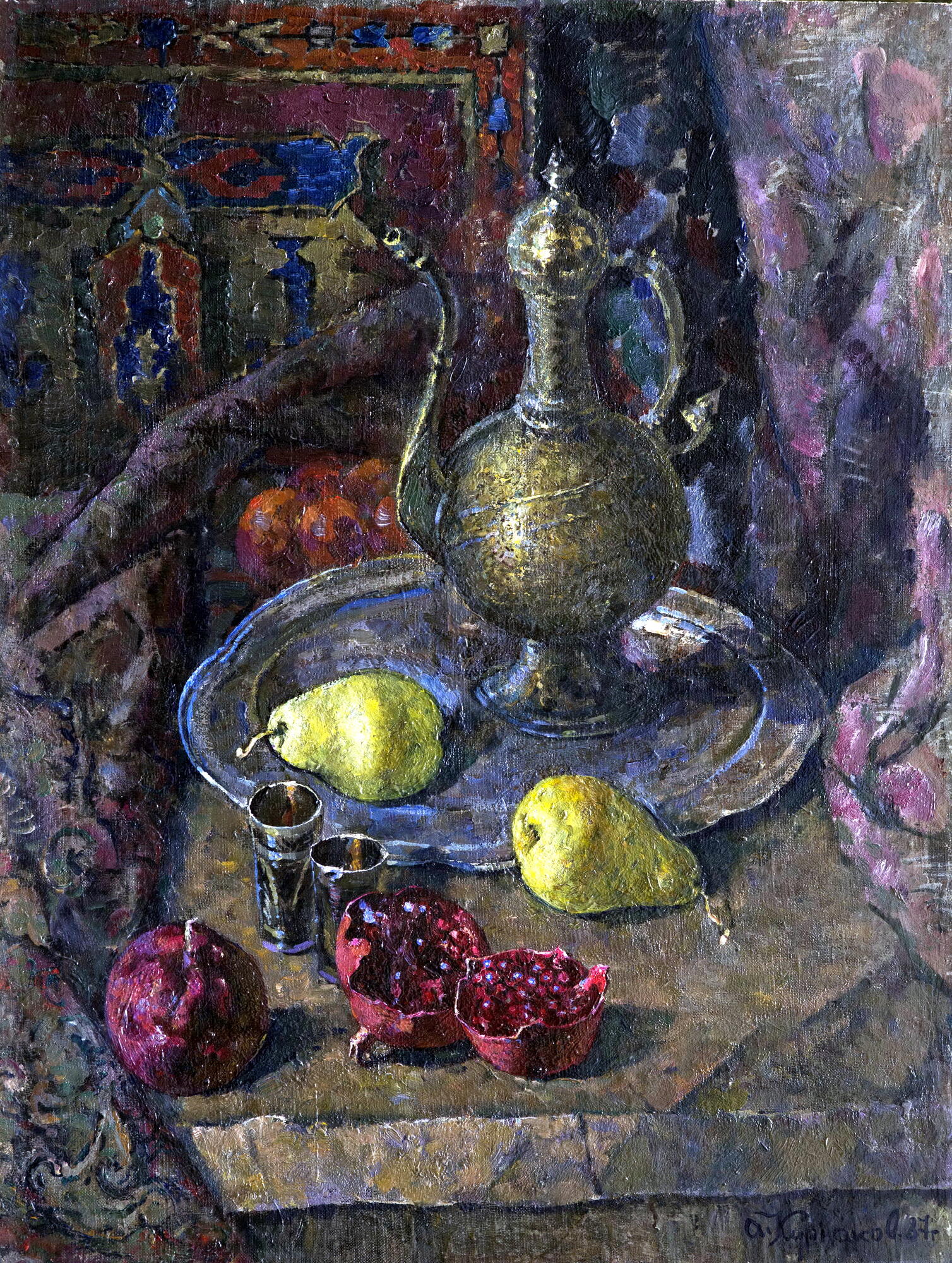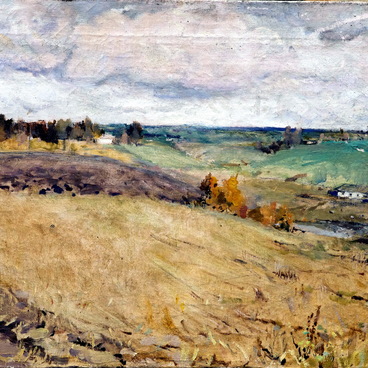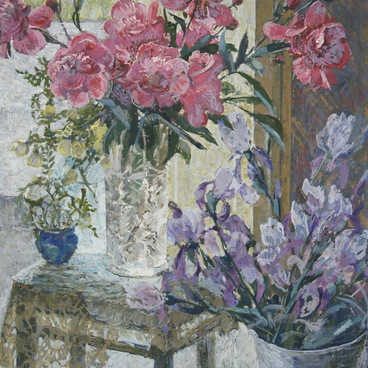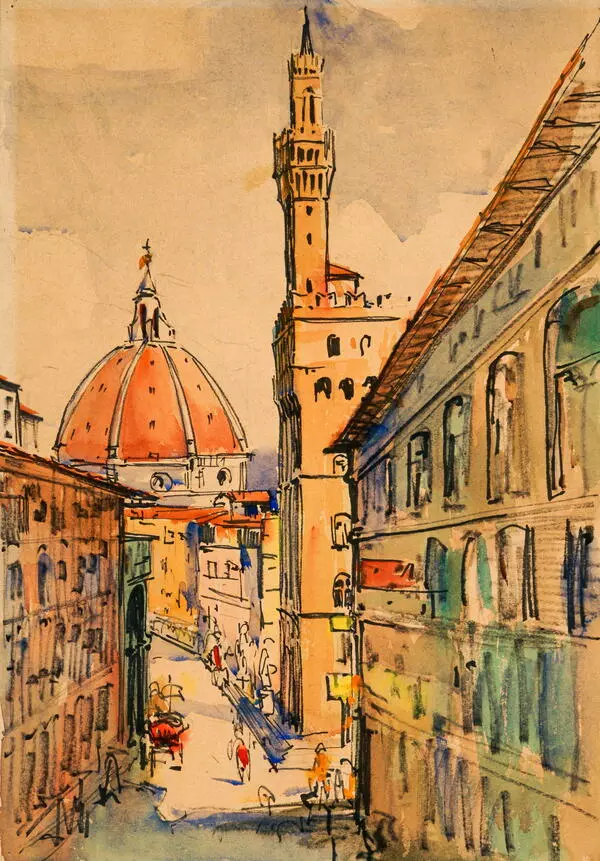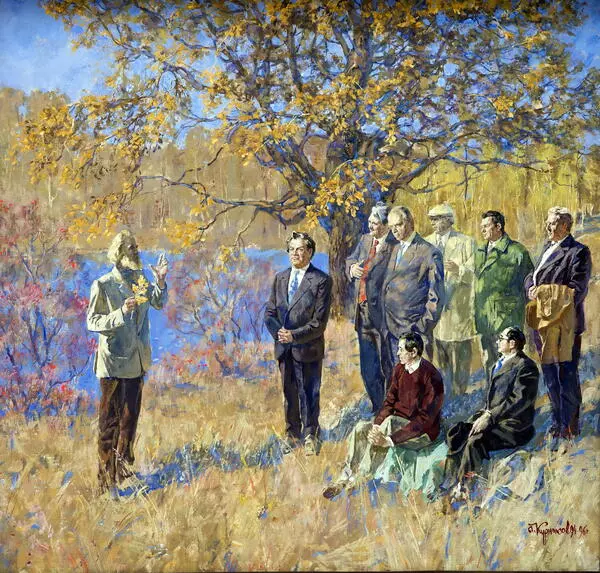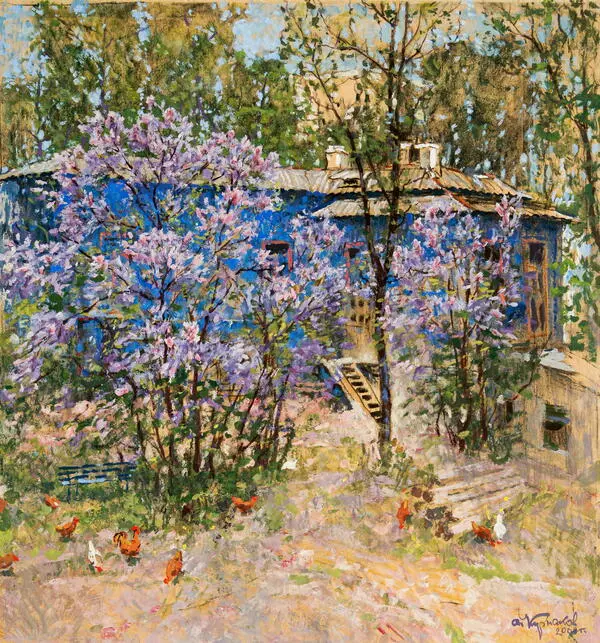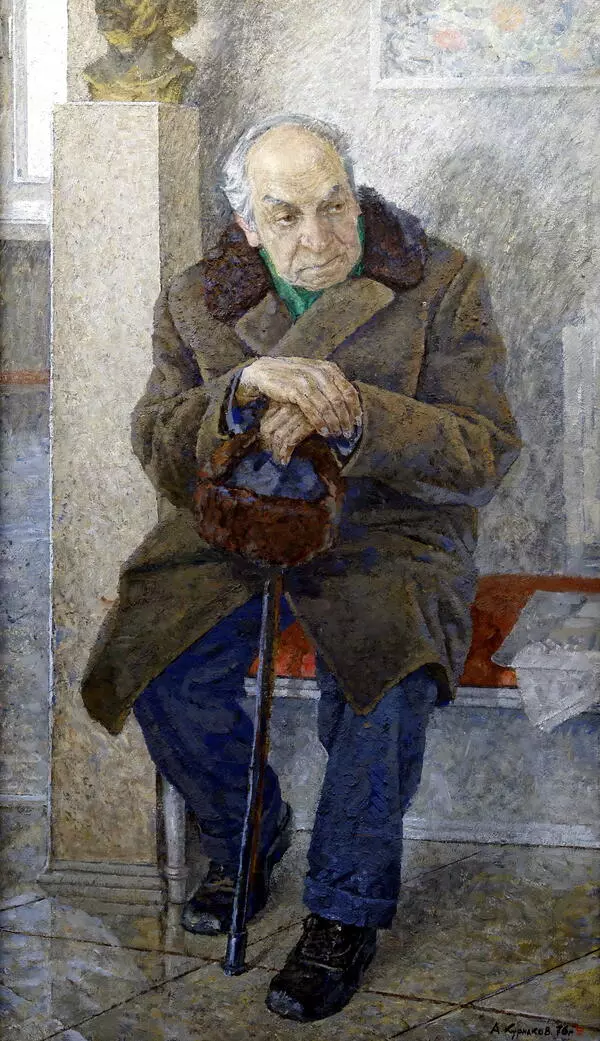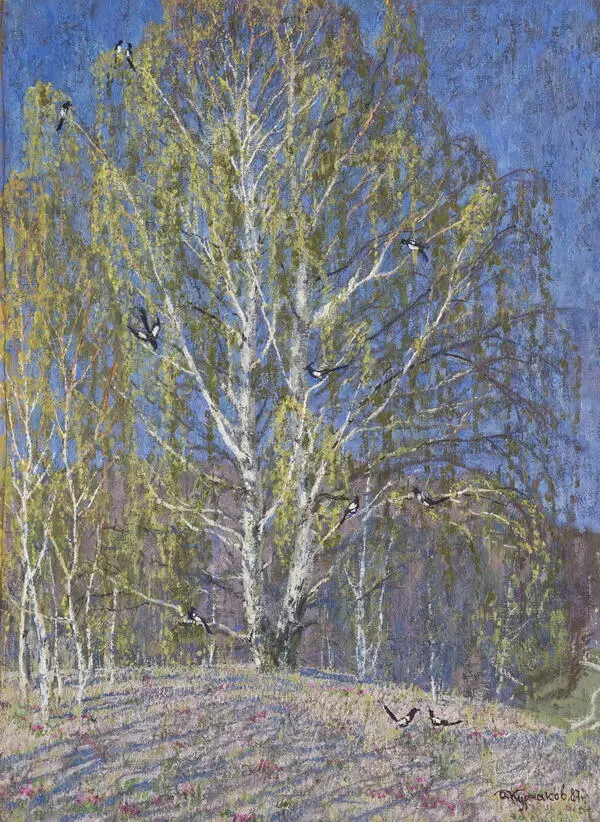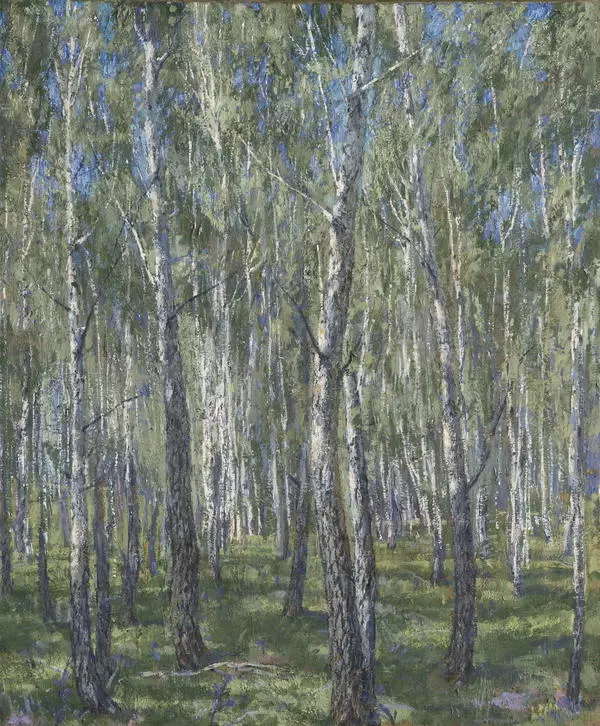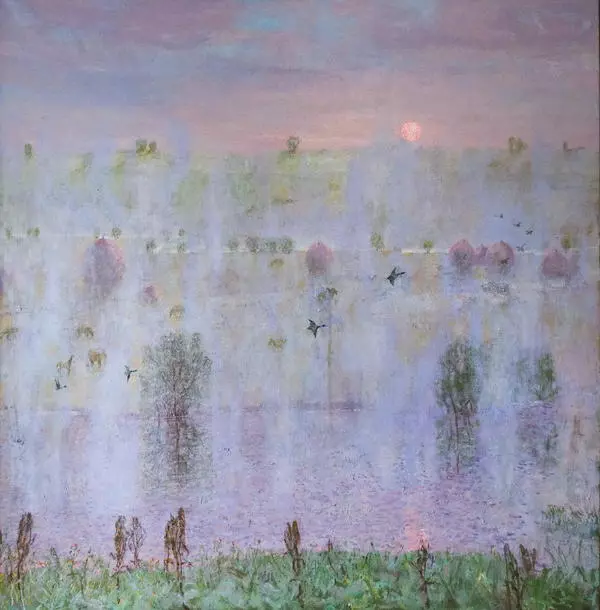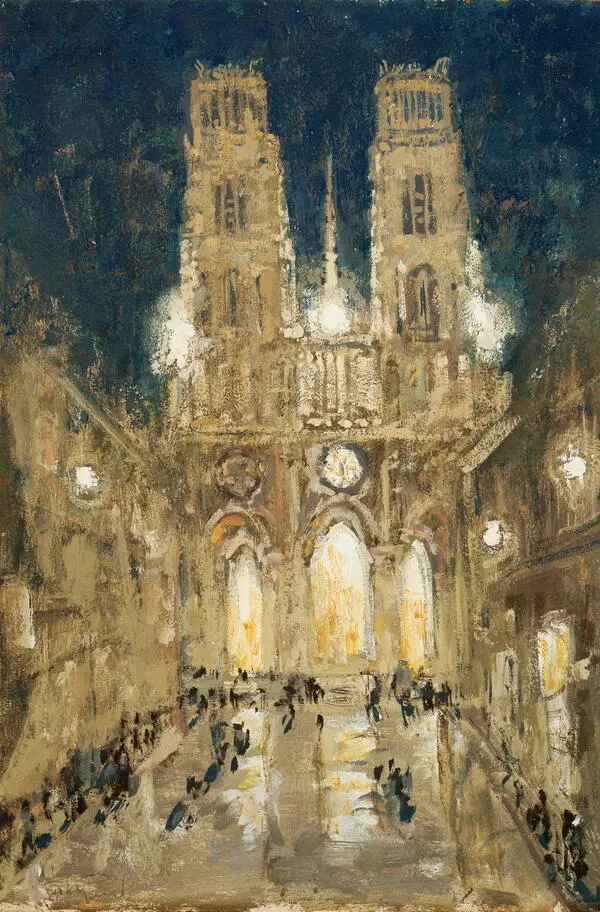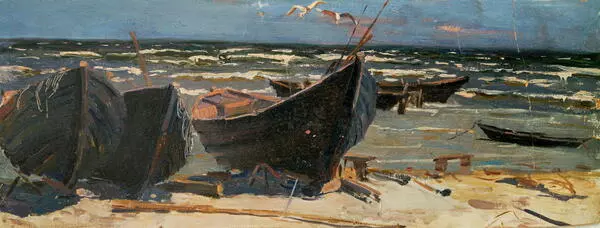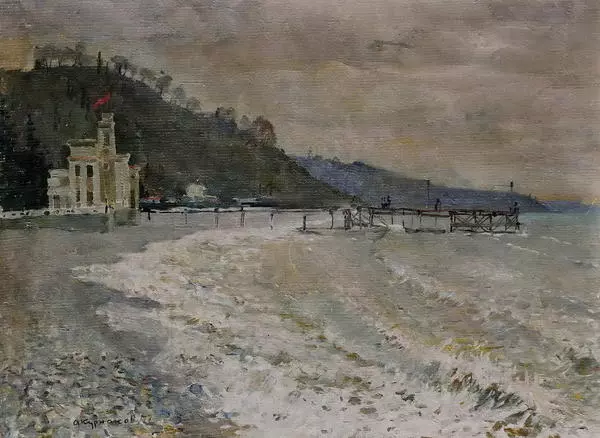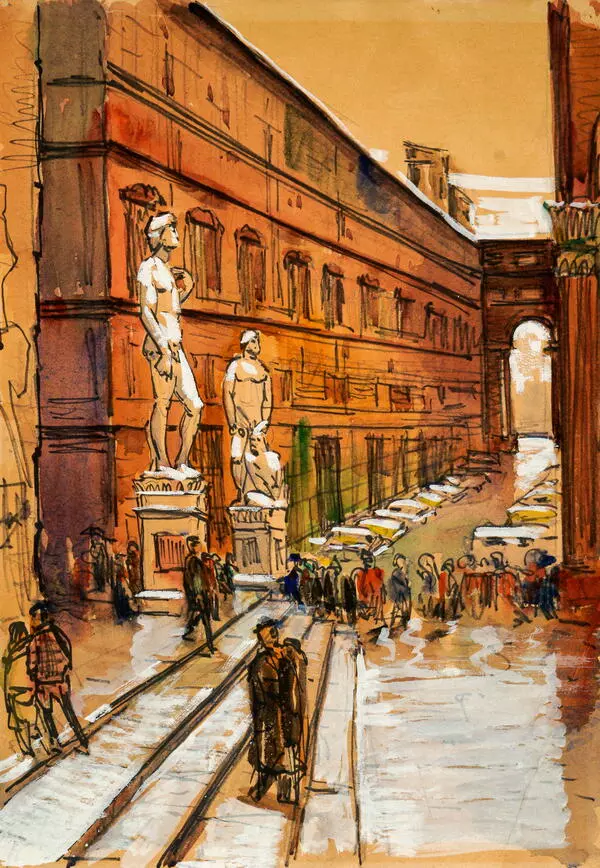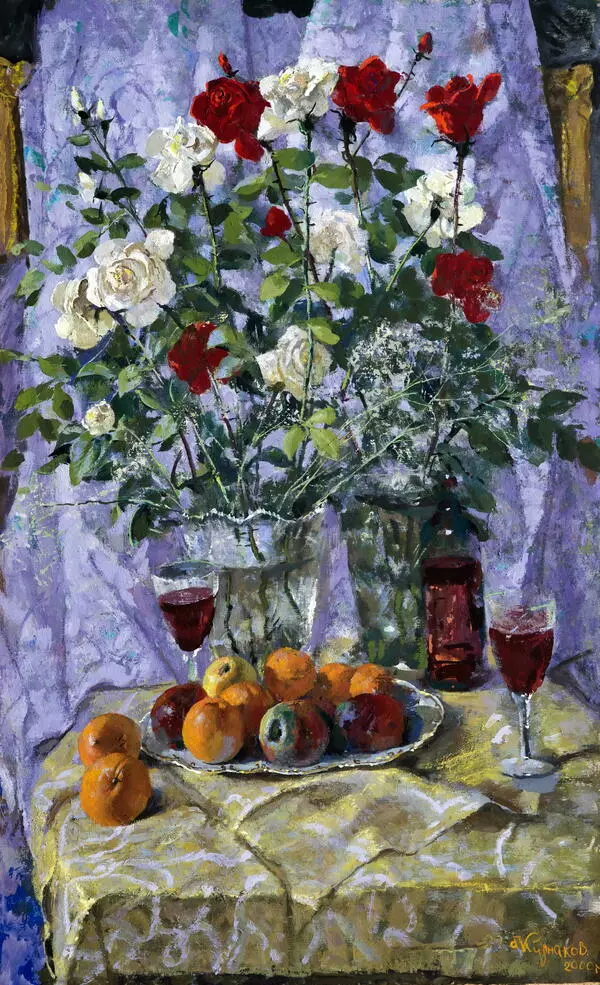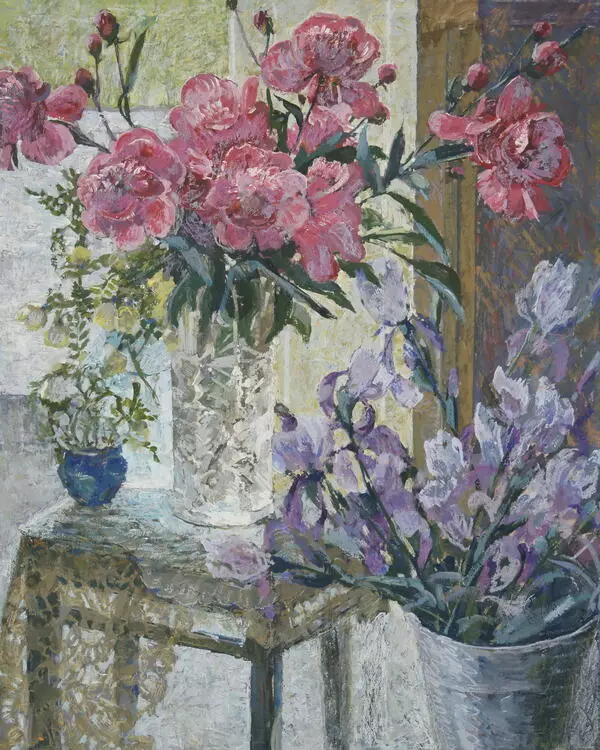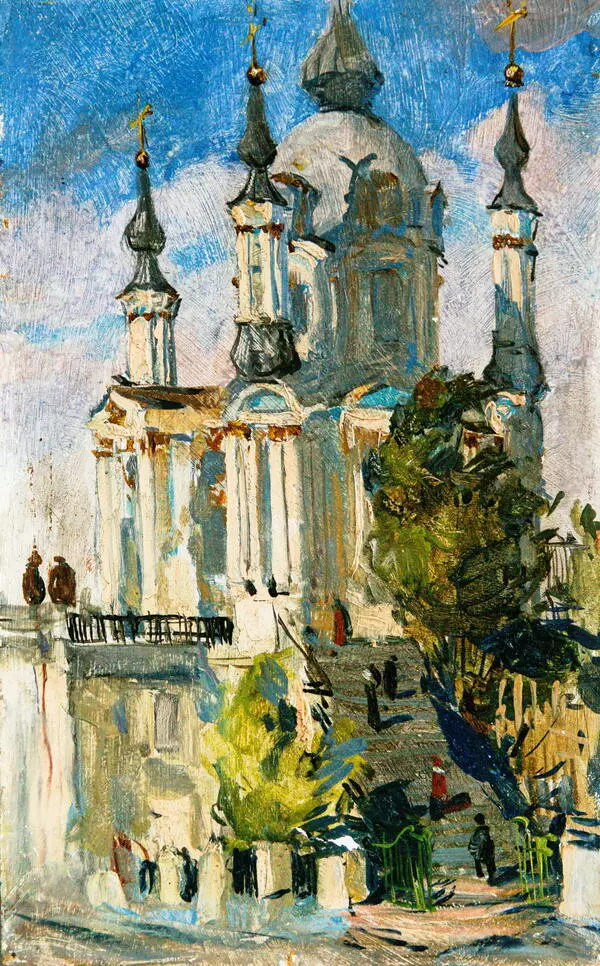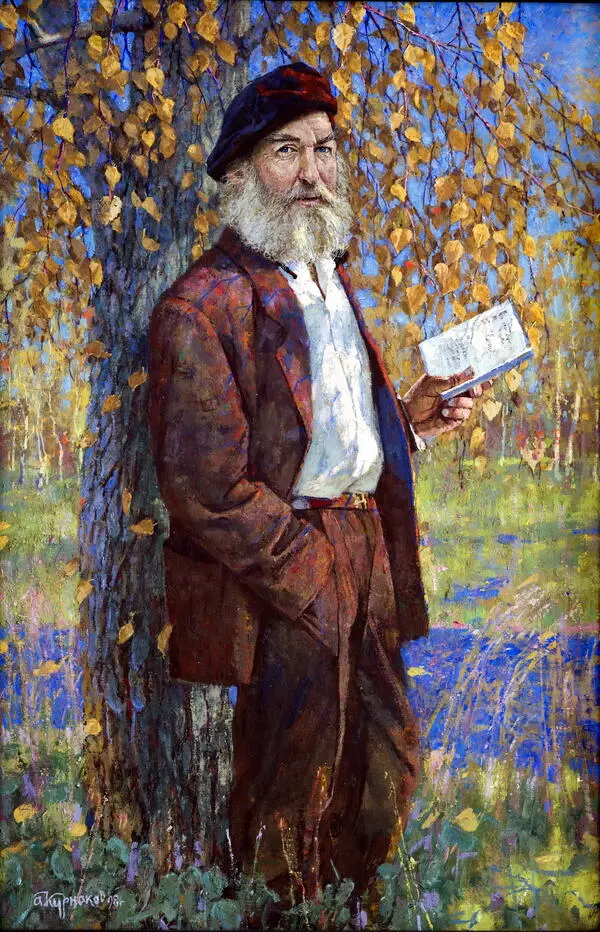Many still lifes by Andrei Ilyich Kurnakov, in addition to purely “floral” ones and representing the trophies of “quiet” hunting - mushrooms, berries or fishing catch - can be classified as “dessert” ones. One can always feel in them the kind atmosphere of a family home that surrounded the artist, the invisible close presence of people dear to him, relatives or friends.
It is no coincidence that in this still life, in the foreground on the left, there are two pomegranates, one of which is broken into two halves, two yellow pears and two gilded piles shining from the inside. They are placed on a rough wooden countertop, standing out with bright spots of color against its dark background. An ancient copper figured vessel gives an “oriental” flare to a still life.
Kumgan is a metal or ceramic vessel for water and wine, its round part is called the body. This patinated kumgan for water, which can be seen in the exposition of the Memorial Workshop of the artist, has a spherical body on a leg, a concave neck crowned with a hinged lid, and smoothly curved long, thin nose and handle. Metal kumgans have been known since antiquity in the countries of the Middle and Near East; they are usually jug-shaped with a narrow neck and long spout. In the artist’s family, the kumgan was considered Iranian. It stands out for its verticality and central location on a round tray with a festoony - wavy, openwork - side, shining with bluish highlights.
The word ‘festoony’ comes from the word ‘festoon’, which means ‘celebration’. The word came to us from France. Festoony edges were popular in France in the 13th century. They are found in various woven products, furniture, metal products. Behind the edge of the tray are a few more pomegranate fruits, and around the tabletop lie purple-bluish draperies embracing the still life in soft folds. They serve not only as a beautiful background for fruits and kumgan, but also form a pause, which helps the bright oriental rug with a blue geometric pattern on a cherry field to ‘sound’ more actively on the left wall.
The artist related to the East by trips to the Caucasus, including Dagestan. His collection includes clay vessels from the famous Lak aul of Balkhar, whose craftsmen are known for their unique ceramics, copper Lak kumgan, metal-encrusted wooden products of masters from the village of Untskul. Dagestan carpets and Kubachi sets, two stacks of which are on the table, were common objects in the house in the multicultural space of the USSR. And the Iranian kumgan appeared at Kurakin’s house probably as a memory of how in 1941 he ended up in this country.
It is no coincidence that in this still life, in the foreground on the left, there are two pomegranates, one of which is broken into two halves, two yellow pears and two gilded piles shining from the inside. They are placed on a rough wooden countertop, standing out with bright spots of color against its dark background. An ancient copper figured vessel gives an “oriental” flare to a still life.
Kumgan is a metal or ceramic vessel for water and wine, its round part is called the body. This patinated kumgan for water, which can be seen in the exposition of the Memorial Workshop of the artist, has a spherical body on a leg, a concave neck crowned with a hinged lid, and smoothly curved long, thin nose and handle. Metal kumgans have been known since antiquity in the countries of the Middle and Near East; they are usually jug-shaped with a narrow neck and long spout. In the artist’s family, the kumgan was considered Iranian. It stands out for its verticality and central location on a round tray with a festoony - wavy, openwork - side, shining with bluish highlights.
The word ‘festoony’ comes from the word ‘festoon’, which means ‘celebration’. The word came to us from France. Festoony edges were popular in France in the 13th century. They are found in various woven products, furniture, metal products. Behind the edge of the tray are a few more pomegranate fruits, and around the tabletop lie purple-bluish draperies embracing the still life in soft folds. They serve not only as a beautiful background for fruits and kumgan, but also form a pause, which helps the bright oriental rug with a blue geometric pattern on a cherry field to ‘sound’ more actively on the left wall.
The artist related to the East by trips to the Caucasus, including Dagestan. His collection includes clay vessels from the famous Lak aul of Balkhar, whose craftsmen are known for their unique ceramics, copper Lak kumgan, metal-encrusted wooden products of masters from the village of Untskul. Dagestan carpets and Kubachi sets, two stacks of which are on the table, were common objects in the house in the multicultural space of the USSR. And the Iranian kumgan appeared at Kurakin’s house probably as a memory of how in 1941 he ended up in this country.
